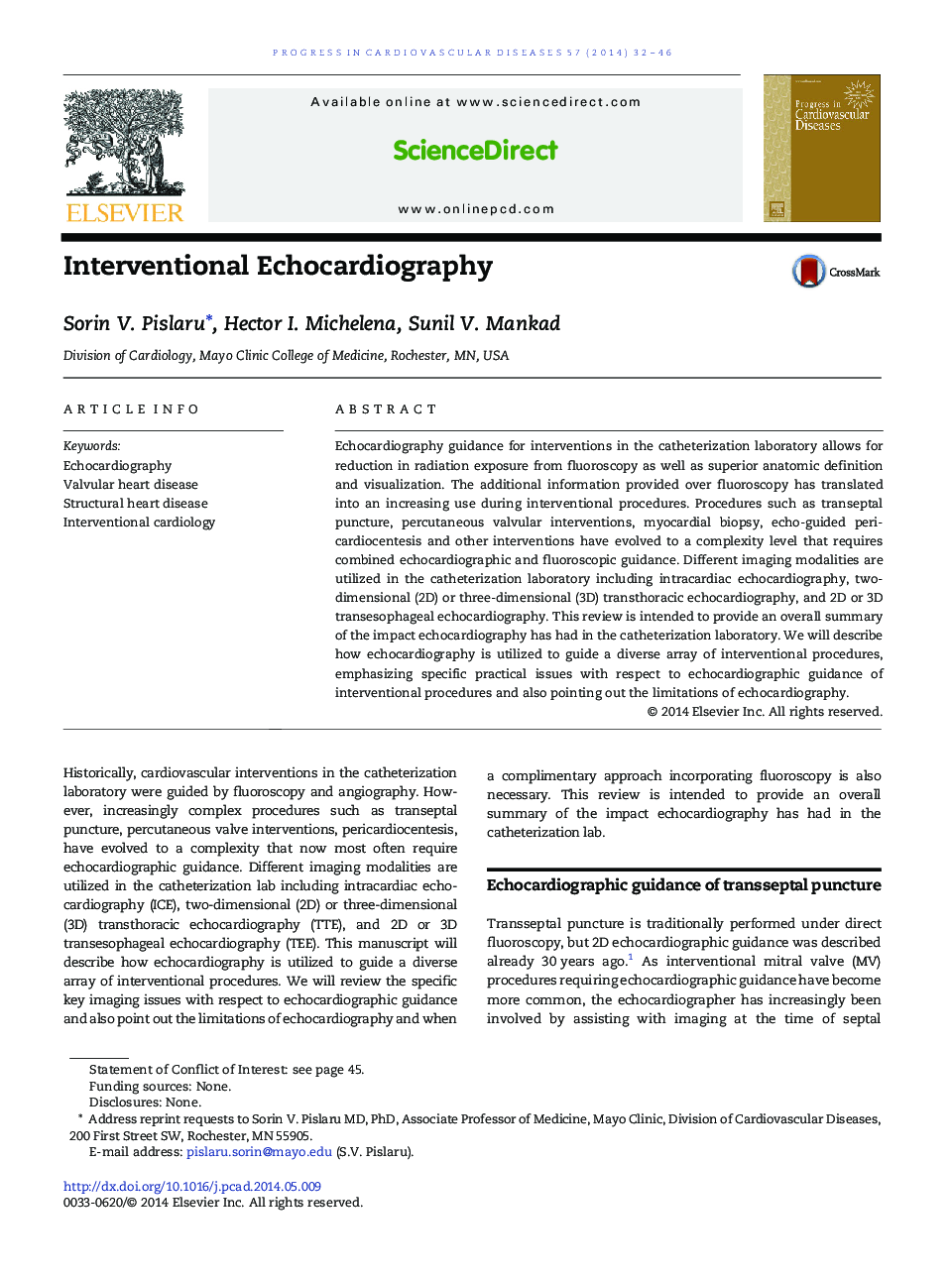| Article ID | Journal | Published Year | Pages | File Type |
|---|---|---|---|---|
| 3006348 | Progress in Cardiovascular Diseases | 2014 | 15 Pages |
Echocardiography guidance for interventions in the catheterization laboratory allows for reduction in radiation exposure from fluoroscopy as well as superior anatomic definition and visualization. The additional information provided over fluoroscopy has translated into an increasing use during interventional procedures. Procedures such as transeptal puncture, percutaneous valvular interventions, myocardial biopsy, echo-guided pericardiocentesis and other interventions have evolved to a complexity level that requires combined echocardiographic and fluoroscopic guidance. Different imaging modalities are utilized in the catheterization laboratory including intracardiac echocardiography, two-dimensional (2D) or three-dimensional (3D) transthoracic echocardiography, and 2D or 3D transesophageal echocardiography. This review is intended to provide an overall summary of the impact echocardiography has had in the catheterization laboratory. We will describe how echocardiography is utilized to guide a diverse array of interventional procedures, emphasizing specific practical issues with respect to echocardiographic guidance of interventional procedures and also pointing out the limitations of echocardiography.
